November 5, 1929 is considered to be the day the Moscow Planetarium was first established.
At the time of the Moscow Planetarium's opening, there were only 12 planetariums in the world: ten were located in Germany, one was in Vienna and another was in Rome.
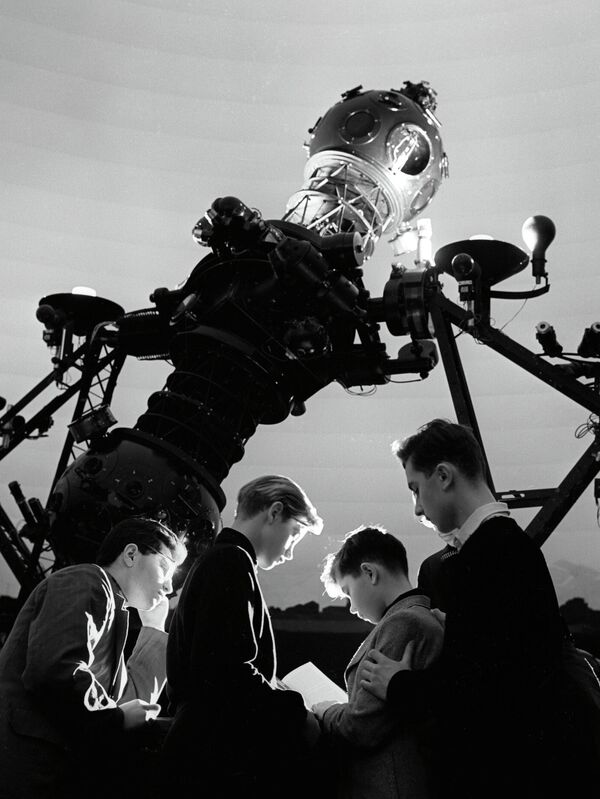
November 5, 1929 is considered to be the birthday of the Moscow Planetarium.
Above: Inside the Moscow Planetarium.
Above: Inside the Moscow Planetarium.
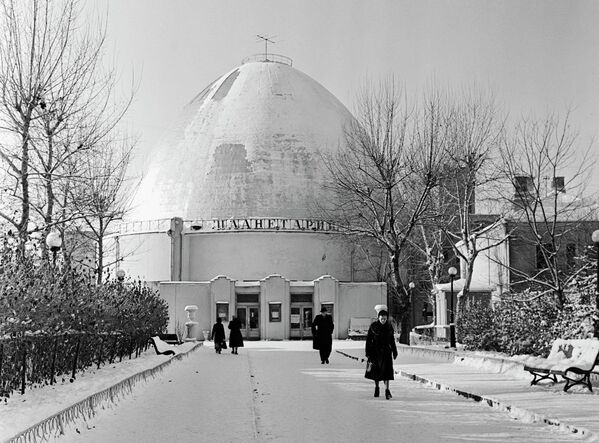
At the time of the Moscow Planetarium's opening, there were only 12 planetariums in the world: ten were located in Germany, one was in Vienna and another was in Rome.
Above: The Moscow Planetarium building.
Above: The Moscow Planetarium building.
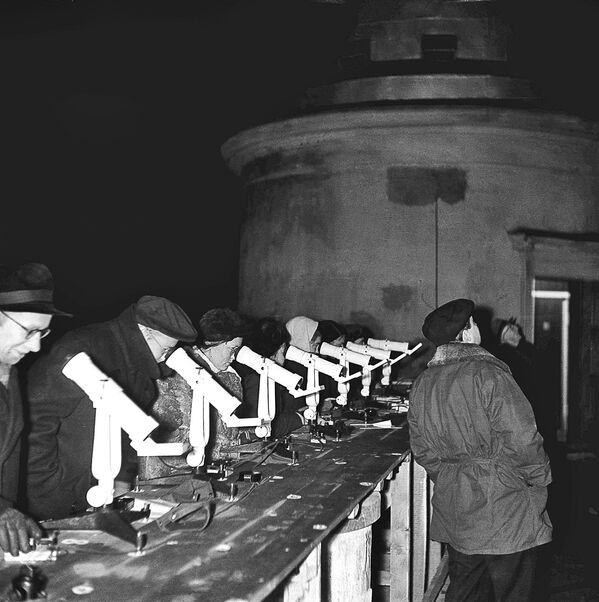
Starting in 1960, for 15 years the Moscow Planetarium was used to teach astro-navigation to future Soviet cosmonauts.
Above: Staff of the Moscow Planetarium observe the passage of Earth's first artificial satellite over Moscow on October 12, 1957, at 5:15 a.m. local time.
Above: Staff of the Moscow Planetarium observe the passage of Earth's first artificial satellite over Moscow on October 12, 1957, at 5:15 a.m. local time.
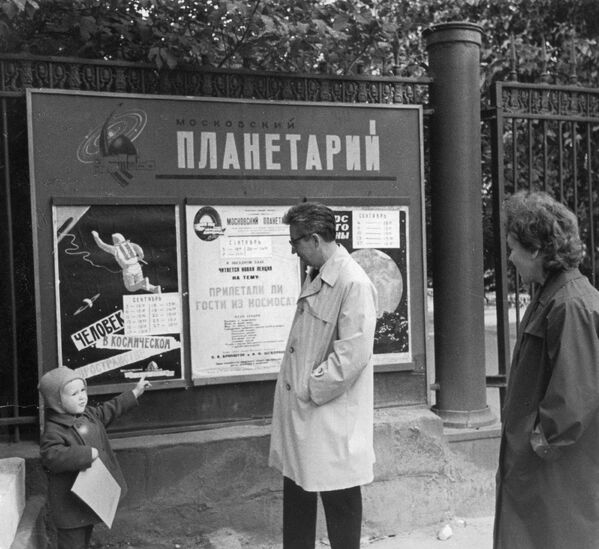
4/8
© East News
Alexei Leonov, a famous Soviet cosmonaut, once said that "the way to Baikonur began here, in the Moscow Planetarium."
Above: Soviet cosmonaut Konstantin Feoktistov with his wife Galina and his son Andrei near the Moscow Planetarium.
Above: Soviet cosmonaut Konstantin Feoktistov with his wife Galina and his son Andrei near the Moscow Planetarium.
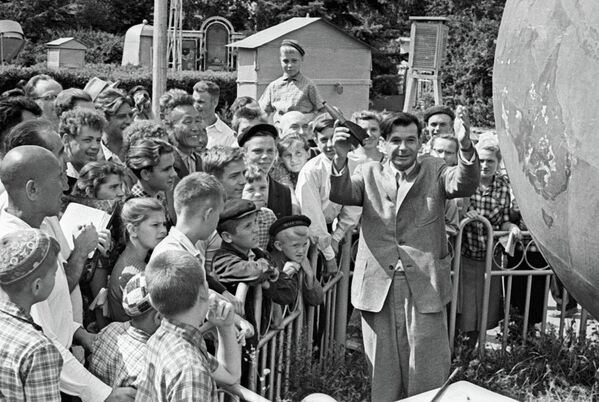
In the 1970s, the Moscow Planetarium became immensely popular, with up to one million people visiting it annually.
Above: Staff member Valery Lutsky (R) tells visitors to the Moscow Planetarium about the flight of the Vostok-2 spacecraft, piloted by Soviet cosmonaut German Titov.
Above: Staff member Valery Lutsky (R) tells visitors to the Moscow Planetarium about the flight of the Vostok-2 spacecraft, piloted by Soviet cosmonaut German Titov.
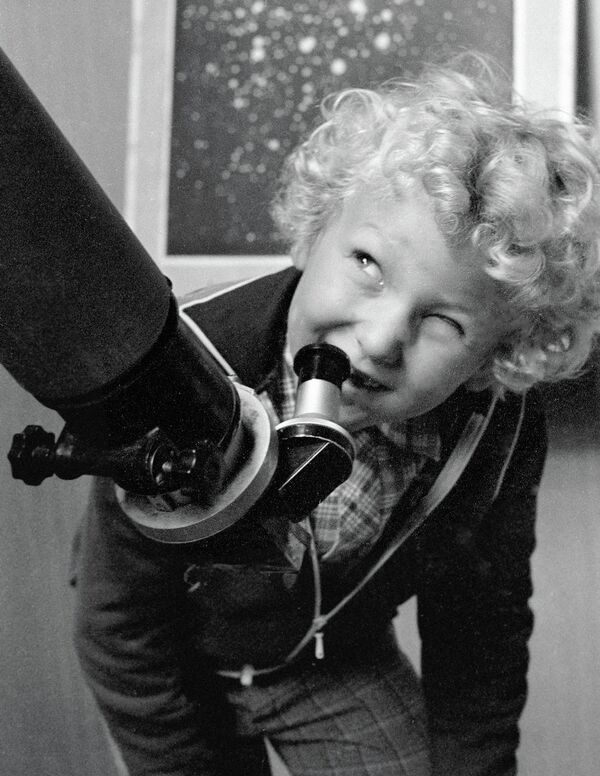
The Moscow Planetarium became a one-of-a-kind educational facility, allowing Moscow students to take practical classes in astronomy and geography.
Above: A young visitor to the Moscow Planetarium looking through a telescope.
Above: A young visitor to the Moscow Planetarium looking through a telescope.
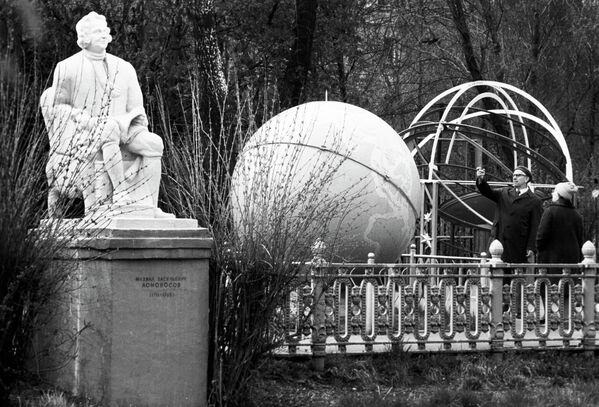
The Sky Park, founded in 1947, is both an observatory and an open-air museum, a tribute to the traditions of celestial observation sites of old.
Above: A monument dedicated to Mikhail Lomonosov and a globe at the Sky Park of the Moscow Planetarium.
Above: A monument dedicated to Mikhail Lomonosov and a globe at the Sky Park of the Moscow Planetarium.
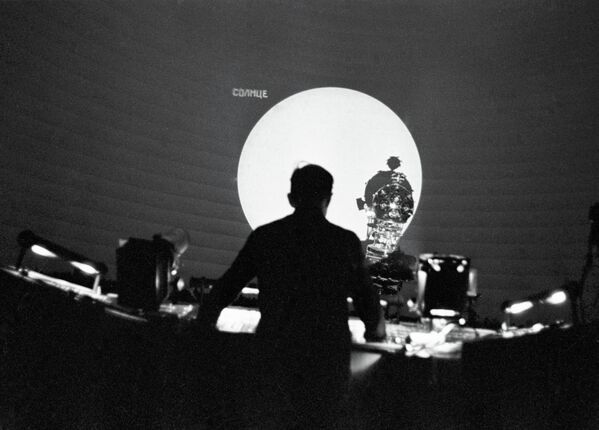
In 1994 the Moscow Planetarium was closed down for renovations. It was reopened only on June 12, 2011.
Above: Inside the Moscow Planetarium.
Above: Inside the Moscow Planetarium.

